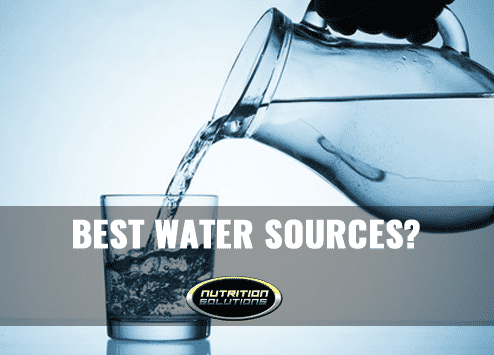
Thank You!


By now, we all know how important pure water is to maintain proper health. Since our bodies consist mostly of water (about 60-75%) it doesn’t take a rocket scientist to figure out that drinking clean water is vital to our health. Water is the most important catalyst for a well functioning body. The question up for debate is, what is the best source of truly clean water?
Carbon filtered, reverse osmosis, mineral, distilled, structured, mountain spring, ozone-treated, UV light-treated, etc.; which is best? Due to do the multitude of opinions and theories circulating in the media, the answer to this question has become hard to determine, and what I have come to suspect is that many popular theories seem to be financially motivated, endorsed and promoted by “experts” who profit from such products and systems, and persuasive arguments on every side have made it confusing to say the least.
Rather than go through each system or product and try to highlight the advantages one may have over another, I would like to share with you the most alarming concerns I have discovered with our public water supply and let you know how it may be affecting you. As most of us know, Chlorine is routinely added to our public water supply and it acts as the first line of defense against harmful bacteria. Although chlorine may not be the healthiest thing to consume (remember it kills bacteria; good and bad), it pales in comparison to the dangers produced by other compounds we have recently discovered within the last decade called disinfectant byproducts. It appears that when we add chlorine to our water it chemically reacts with naturally decaying organic matter like grass, twigs, and leaves. This reaction creates disinfection byproducts (known as DBPs), and they are extremely carcinogenic. In fact, they are estimated to be 10,000 times more toxic than chlorine alone, and out of all the toxins present in our water, such as trace amounts of heavy metals, nitrates, pharmaceutical drugs, or fluoride – DBPs may be the nastiest of the group.
That said, water supplies from lakes or rivers are more problematic than water supplies from deep wells when it comes to DBP’s (wells present their own specific problems). The two most common disinfectant byproducts are trihalomethanes (THMs) and haloacetic acids (HAAs)
So now that we know one of the biggest concerns how can we protect ourselves? Unfortunately, the answer isn’t that easy because there seem to be only two systems I am aware of that eliminate DBPs; distillation and reverse osmosis.
Reverse Osmosis filters for your kitchen sink are very effective. However, they will not filter the water you bathe in. This is a concern because as you shower or bathe, DBPs are absorbed through the skin and enter into your blood stream. Furthermore, when you swim in a pool or relax in a jacuzzi heavily treated with chlorine your risks of DBPs exposure is greatly increased. Even more alarming is the fact that when we take a hot shower and inhale steam, the DBPs go directly into our lungs where they are more easily absorbed into the blood stream. It has been estimated that a 10 minute shower will expose you to the equivalent amount of toxic compounds contained in 10-15 glasses of unfiltered tap water. That said, I would consider avoiding spending long periods of time in steam rooms. Purposely breathing in steam loaded with DBPs could have a negative affect on your health.
Unfortunately, the problem with a “whole-house filter” is that they are typically expensive, costing $6K-10K. That said, I have recently found decent whole–house filtering systems for around $1000 – $1500. (If you are interested in a system for your home please contact me for more information).
Reverse osmosis and distilled water seem to offer the most protection from the biggest concerns of DBPs. Installing a reverse osmosis water system seems to make the most sense to me. First of all it’s affordable and will insure that the water you drink is clear of all potentially harmful contaminants, including DBPs.
For my house, I installed a whole house carbon filter for about $1000 to filter all of the water coming in to my house. Then I put a separate reverse osmosis system on my kitchen sink for another $250. A local water cooler called Kona Coolers has recently got my attention by creating a system that purifies tap water instead of using jug refills. The coolers dispense clean water that has gone through carbon filtration, reverse osmosis, and UV bacteria elimination. It is easy to install and you pay an affordable monthly fee. PowerHouse Gym Downtown Tampa recently installed one and I think it’s a great option for a household or a business.
It appears that a good distillation system may offer the next best option for pure water. However, they can be costly as well. If you can NOT afford to invest in a whole-house water filter you should consider minimizing your time in hot showers, bathtubs, swimming pools, steam rooms or Jacuzzis that do not have properly filtered water. If anyone has helpful information or has any questions on this topic please feel free to share so we can all make the best decisions for both our selves and our loved ones.
Weight loss & muscle building meal plans.
